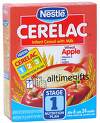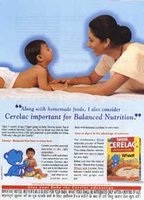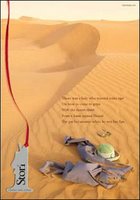Brand : Ceat
Company: RPG
Brand Count:138
Tyres as such is not an exciting market like FMCG or durables. The product that comes fitted with our vehicles come to the customer's mindset when it needs to be replaced (am t alking about ordinary consumers).While in the case of business customers like truck owners, the choice of a tyre is important because of factors like mileage, maintenance and toughness.
alking about ordinary consumers).While in the case of business customers like truck owners, the choice of a tyre is important because of factors like mileage, maintenance and toughness.
Indian tyre industry is worth around Rs 10,000 crores and is dominated by players like MRF,JK, Appolo, Ceat etc. Ceat is one of the oldest players in the Indian market.
Ceat was established in the year 1924 in Torino Italy. For those who wonder what CEAT means, Ceat is the acronym of Cavi Electrici Affin Torino, that means Electrical Cables & Allied Products of Turin. Ceat came to India in 1958 in collaboration with Tata group. In 1982, RPG group took over the company which became Ceat Ltd.
Ceat was a major player in the market and the brand was promoted aggressively through the media esp in the passenger car segment. The brand faced its major challenge with the launch of Radial Tyres in the Indian market. Reports suggest that it was JK tyres that pioneered radial tyre revol ution in India ( correct me if I am wrong).Radial was a disruptive innovation that changed the dynamics of the market. Ceat was caught unaware and the market slipped from this company.
ution in India ( correct me if I am wrong).Radial was a disruptive innovation that changed the dynamics of the market. Ceat was caught unaware and the market slipped from this company.
Ceat now is in the fourth position interms of market share. The brand is well established in the Heavy commercial segment with amarket share of 19% while in the car radial, it has only 10%.
Ceat is famous for its Tagline " Born Tough". It is one of the best positioning you can have in the industry. The mascot Galloping Rhino exemplifies the positioning of the brand as the tough brand. Ceat used this mascot and the positioning during the nintees with lot of effectiveness.The website of Ceat talks about the target segment as Strong Men who are Dynamic and Adventurous which personifies the brand DNA. Ideally this brand could have been an icon in the market . But it did not become one.
Company: RPG
Brand Count:138
Tyres as such is not an exciting market like FMCG or durables. The product that comes fitted with our vehicles come to the customer's mindset when it needs to be replaced (am t
 alking about ordinary consumers).While in the case of business customers like truck owners, the choice of a tyre is important because of factors like mileage, maintenance and toughness.
alking about ordinary consumers).While in the case of business customers like truck owners, the choice of a tyre is important because of factors like mileage, maintenance and toughness.Indian tyre industry is worth around Rs 10,000 crores and is dominated by players like MRF,JK, Appolo, Ceat etc. Ceat is one of the oldest players in the Indian market.
Ceat was established in the year 1924 in Torino Italy. For those who wonder what CEAT means, Ceat is the acronym of Cavi Electrici Affin Torino, that means Electrical Cables & Allied Products of Turin. Ceat came to India in 1958 in collaboration with Tata group. In 1982, RPG group took over the company which became Ceat Ltd.
Ceat was a major player in the market and the brand was promoted aggressively through the media esp in the passenger car segment. The brand faced its major challenge with the launch of Radial Tyres in the Indian market. Reports suggest that it was JK tyres that pioneered radial tyre revol
 ution in India ( correct me if I am wrong).Radial was a disruptive innovation that changed the dynamics of the market. Ceat was caught unaware and the market slipped from this company.
ution in India ( correct me if I am wrong).Radial was a disruptive innovation that changed the dynamics of the market. Ceat was caught unaware and the market slipped from this company.Ceat now is in the fourth position interms of market share. The brand is well established in the Heavy commercial segment with amarket share of 19% while in the car radial, it has only 10%.
Ceat is famous for its Tagline " Born Tough". It is one of the best positioning you can have in the industry. The mascot Galloping Rhino exemplifies the positioning of the brand as the tough brand. Ceat used this mascot and the positioning during the nintees with lot of effectiveness.The website of Ceat talks about the target segment as Strong Men who are Dynamic and Adventurous which personifies the brand DNA. Ideally this brand could have been an icon in the market . But it did not become one.
For some reason ,the brand became invisible.The company may have chosen to concentrate on the OEM segment where more than branding , Sales effectiveness counts. Together with the aggressive media campaigns from MRF and JK , the brand was sidelined in the car/bike segment. The problems with Industry interms of rising input costs and reduced margins have added to the problems for this brand.
Ceat is a brand which have a good brand recall and equity. The quality aspect is questionable since the brand is featured at the lowest position in the JD Power surveys. With the entry of big international names like Bridgestone, Michelin & Goodyear into the market has made the task tough for the Rhino. Ceat had it been aggressive in brand building could have positioned itself as a premium brand for SUV and similar segments. The brand with its exceptional positioning platform has not being able to realise its potential in the point of view of a marketer.
Ceat : Born Tough, Mellowed Later.
source: domain-b.com,ceat.com,businessline









